
Friday’s release did not only contain the new “glue” functionality. There was also an upgrade of the site to work with the new CSV export functionality over at Quiske.
What is Quiske?
The Quiske Rowing Performance system consists of an Android app and a sensor pod. This system records in-stroke metrics, speed and acceleration data at many points during each stroke. You can use it as real time feedback to see
- Boat acceleration curve
- Boat velocity curve
- Oar angle velocity curve
- Oar angle vertical and horizontal plot
- Slide speed curve
In the app, you can record the data, which is then uploaded to the Quiske portal, where you can make charts of the above-mentioned metrics.
How it works
Strap a Quiske sensor to your oar or attach it to the underside of your seat. Fire up the RowP app and start recording. Here is a quick intro video:
In the upgraded RowP app, I noticed a few usability improvements. I liked them. But for this row, I was really interested in what happens after you upload the data to the Quiske portal. On top of the usual, excellent analytics functionality, you can now also export a CSV file with per-stroke data. So after I looked at these charts


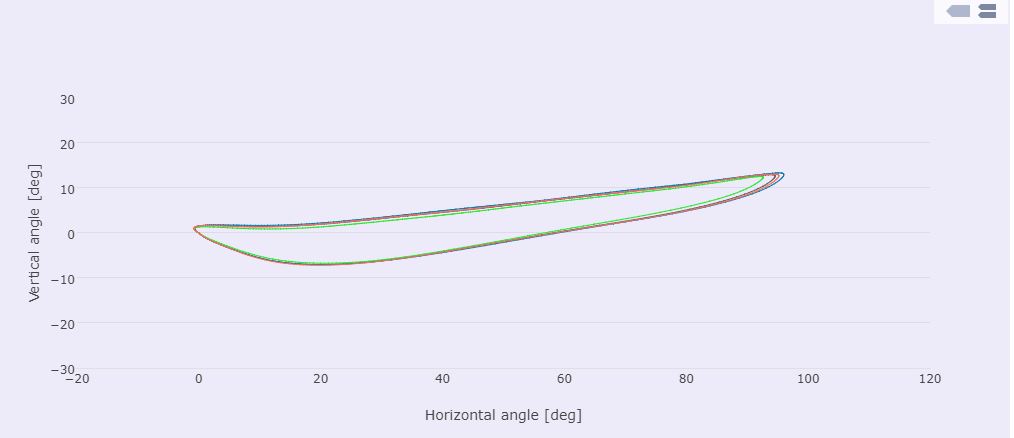
I hit the “Share via Email” button and filled in the email address for uploading workouts to rowsandall.com:

And sure enough. A few minutes later I received a confirmation email that my workout had been added to rowsandall.com. Here is the chart:
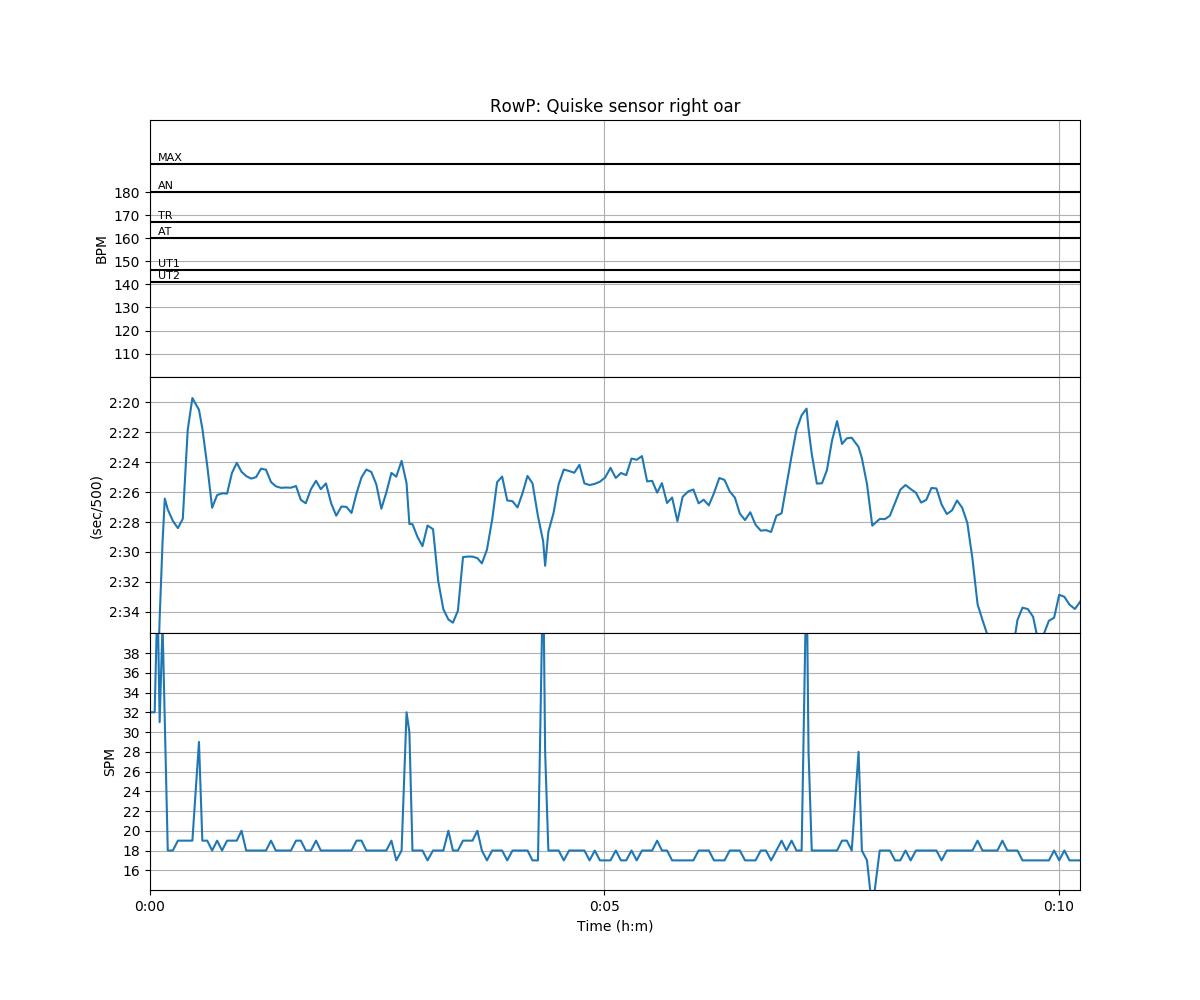
Obviously, no heart rate data, because RowP doesn’t support heart rate measurements. Actually, with data fusion, Rowsandall.com offers a solution for this.
So why is this exciting?
This is exciting for many reasons.
First, it gives Quiske users a way to use their data on rowsandall.com and from there to the Concept2 logbook, Strava, etc.
Second, it gives Quiske users a way to systematically track some of the metrics measured by the Quiske pod. While the Quiske portal is great for looking at the dynamics of the stroke, how you are accelerating and slowing down the boat, and to discover technique flaws like blades flying high before the catch, and/or missing water, at rowsandall.com we can look at per-stroke and per-session data.
Currently, we support one new metric for Quiske users: Stroke length (in degrees). You get this metric when you put the sensor on the oar. The CSV file contains a few more metrics, though, and you should see them appear on rowsandall.com in the near future.
Having your workout on rowsandall.com, you can also compare it to other recordings of the same workout, for example data taken with CrewNerd, CoxMate, or the NK SpeedCoach. Here is a comparison of stroke rate measured by RowP vs NK SpeedCoach:
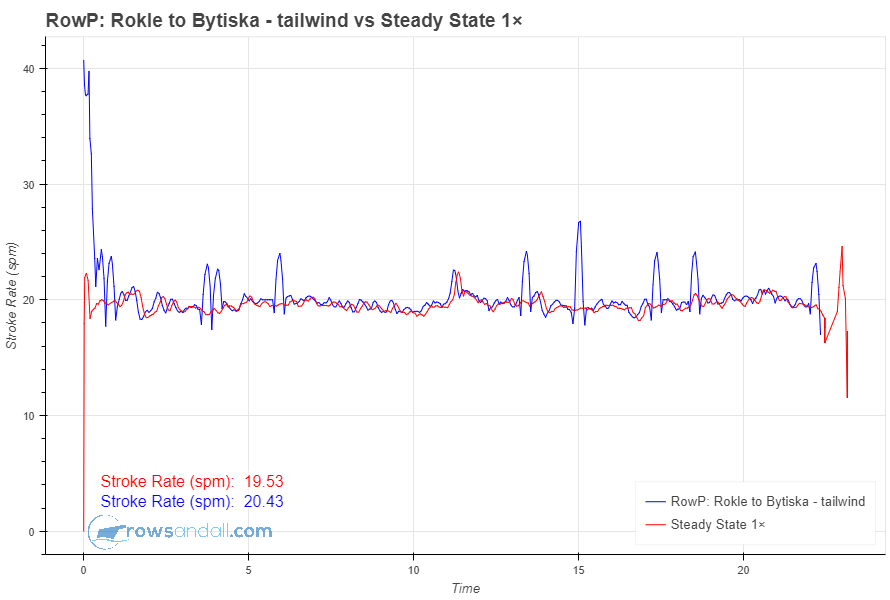
Obviously, the RowP algorithms are struggling to get the stroke rate right at some points in this row.
Here are two charts showing the stroke length as measured by NK Empower Oarlock (red line) and Quiske pod (the blue line):
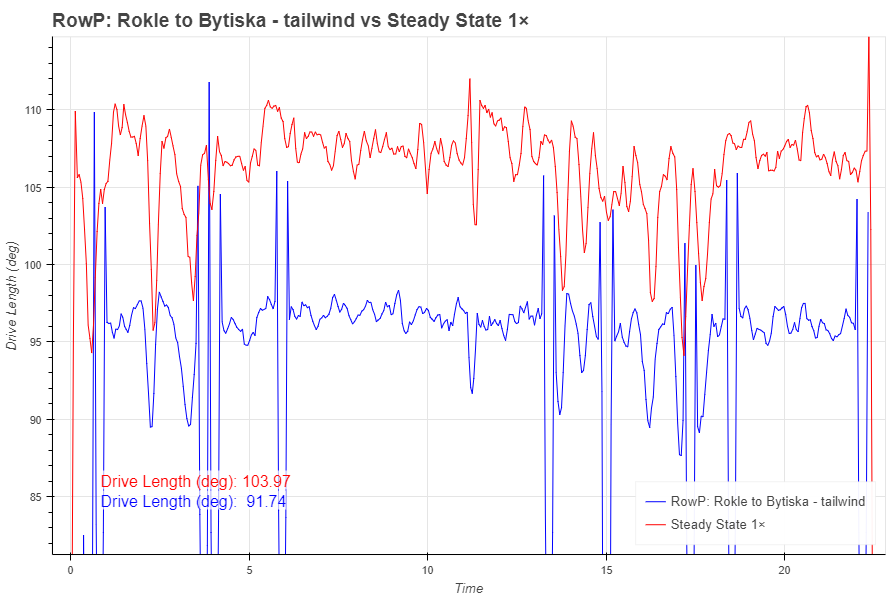
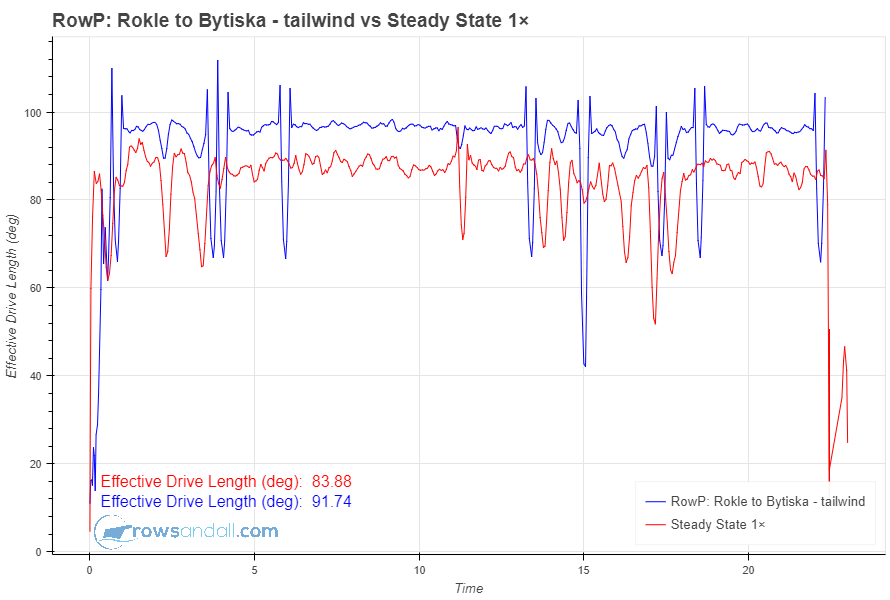
Interestingly, the Quiske pod measures a value somewhere in between the Empower total drive length and effective drive length. Quiske defines the catch as the moment where the boat reaches its minimum speed, and according to them the system measures the total angle the oar makes in one cycle. This should correspond to the Empower drive length (degrees), but there are a couple of caveats here:
- Was the Empower angle value calibrated well? I do believe so, but trying to recalibrate it this morning, I broke their flimsy 3D printed calibration tool.
- The Quiske system relies on the RowP app doing some pretty advanced calculations to calculate angles from the acceleration data that the pod is measuring (including feathering).
- Quiske measures at the oar shaft. Empower measures at the oarlock.
I don’t think this is a big thing. They are not the same metrics, and I don’t think that comparing drive length from the two systems is a regular use case. The real use is in tracking the metric and looking at how its values correlate with boat speed and rowing efficiency.
Another interesting way to use rowsandall.com in combination with the Quiske system, is by Data Fusion. If you have CrewNerd, or a CoxMate unit, or an NK SpeedCoach without the Empower Oarlock, you can record in parallel with Quiske and then combine data.
This chart shows heart rate (measured with the NK SpeedCoach and drive length measured with Quiske in one chart.
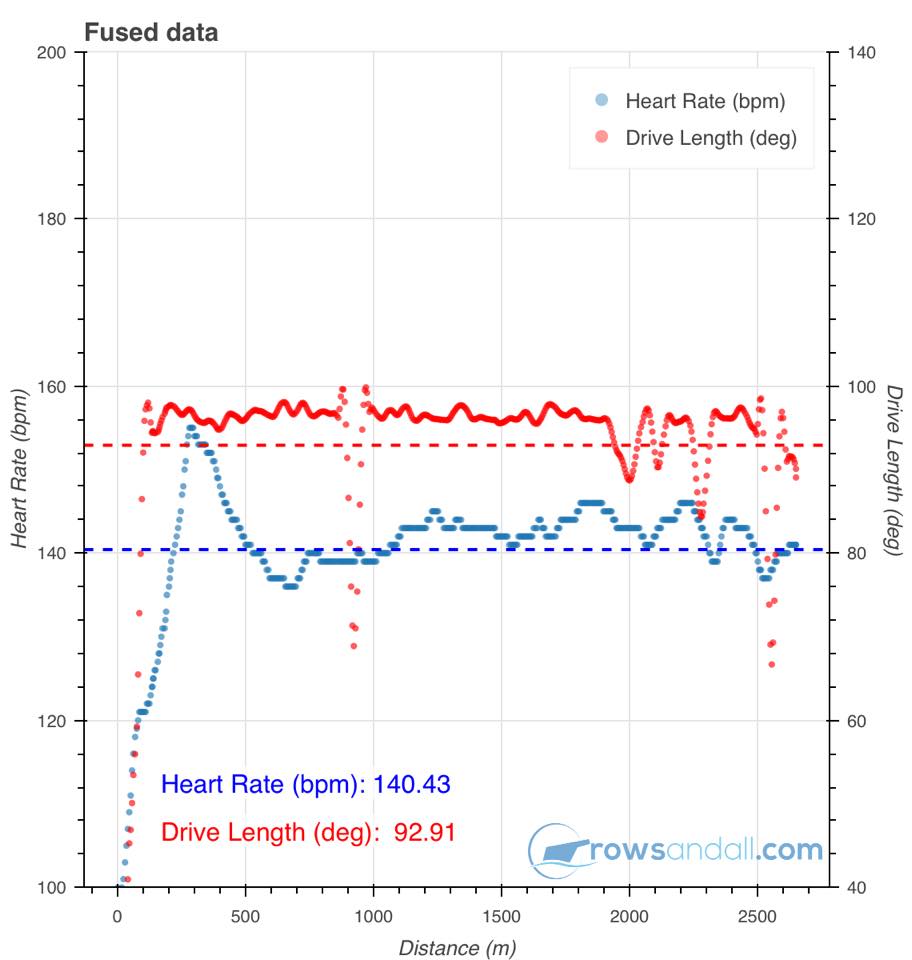

Some of the other metrics are:
- Oar angle maximum drive speed (degrees/s)
- Max seat speed (m/s)
- Max seat recovery speed (m/s)
The CSV also contains boat acceleration, seat and oar angle curves. These are in stroke metrics, and visualising them on rowsandall.com requires a bit more work, but the most exciting thing about this is the possibility to derive some per stroke metrics from these curves.
These are exciting times for rowing data enthusiasts.
